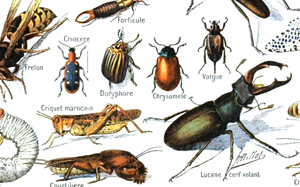Something has been bugging me...

 Peter Dewees, PROFOR's manager, submitted this blog.
Peter Dewees, PROFOR's manager, submitted this blog.
I loved the attention garnered by a UN report urging people to eat insects during the conference on Forests for Food Security and Nutrition hosted by the FAO in Rome. For experts of all stripes, it was a reminder of what the broad public really thirsts for: not necessarily data, but vivid stories that challenge our assumptions, with a dose of shock and humor (bugs!!!) thrown in for good measure.
The short paper I presented at the same conference ("Bouncing Back: Forests, trees and resilient households"), lacked the elements of a blockbuster for sure. But the question it raised has stayed with me: How can we build more resilient landscapes to improve food security?
To a forester or agroforester, the answer is clear: trees need to be part of the picture, not only because of the food trees directly produce or house ("Non-timber forest products," including things like edible caterpillars) but also because of the many services forests provide (water regulation, pollination, fertilization, etc) and the way in which forests act as a vital "safety net" at times of economic and climatic stress.
However the data backing this theory of tree-based resilience is sorely lacking. In order to steer policy toward tree-based landscape solutions, we will need to do a better job at collecting evidence that those approaches work and to understand the institutional context that nurtures them. PROFOR recently approved a grant to do just that: analyze the contribution of landscape and tree based approaches to strengthening resilience in Africa's drylands.








